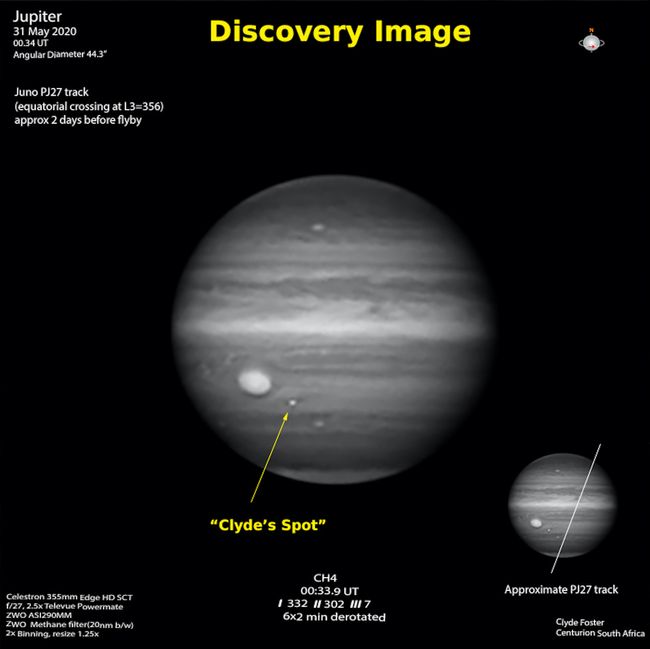Although NASA has sent a craft to Jupiter’s orbit — the Juno probe — a newly-named region of the planet was recently spotted by an amateur astronomer.

Image credits NASA/JPL-Caltech/SwRI/MSSS / Kevin M. Gill.
The structure, a swirl not far from the planet’s infamous Great Red Spot, has been christened the somewhat anticlimactic ‘Clyde’s Spot‘. At the time it was observed, Juno was flying between 28,000 miles and 59,000 miles (45,000 to 95,000 kilometers) above Jupiter’s southern cloud tops.
Long-distance spotting
“The feature is a plume of cloud material erupting above the upper cloud layers of the Jovian atmosphere,” according to a NASA description of the new imagery. “These powerful convective ‘outbreaks’ occasionally erupt in this latitude band, known as the South Temperate Belt.”
After it was spotted by Clyde Foster from Centurion, South Africa on May 31, Juno moved in to take some better-quality pictures of the structure on June 2 — which is, as far as we know, a storm.
It rages in swirls not far off from Jupiter’s centuries-old Great Red Spot. Unlike the iconic storm, however, Clyde’s Spot is young, having just popped up. It’s not the first time such a storm appeared out of the brown and orange clouds: Juno captured another similar system at this latitude back in February of 2018.

Image credits Clyde Foster.
Juno orbits Jupiter on an elliptical orbit, so it does most of its data-gathering every 53.3 (Earth) days as it comes closest to the gas giant. Its latest fly-by luckily placed it at the ideal angle to capture Clyde’s Spot on its JunoCam. NASA makes JunoCam images available to the public, and citizen scientist Kevin Gill processed five of its images into a composite view of Clyde’s Spot. Gill is responsible for many of the striking NASA images you’ve seen online.
Both his work and that of Foster shows that there’s enough space in space exploration for everybody down here on terra firma — and an amazing wealth of beauty and science to share with us.









